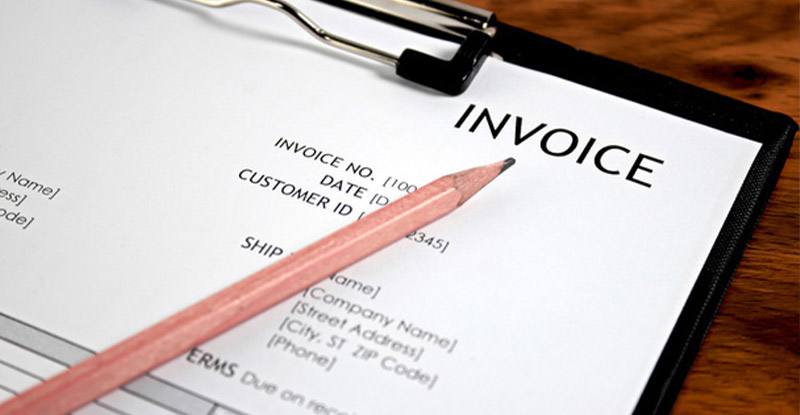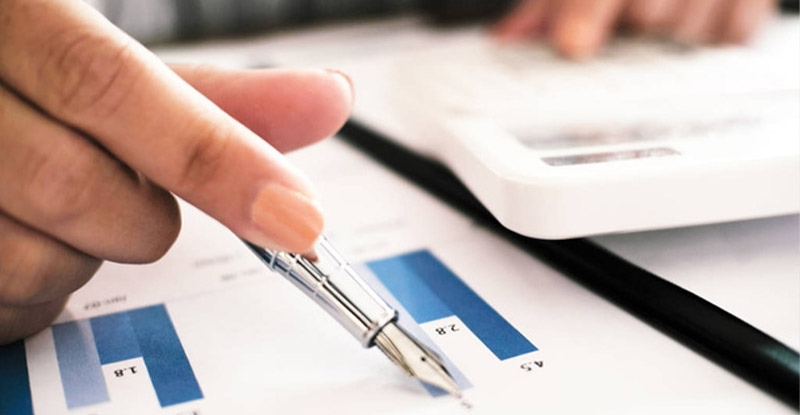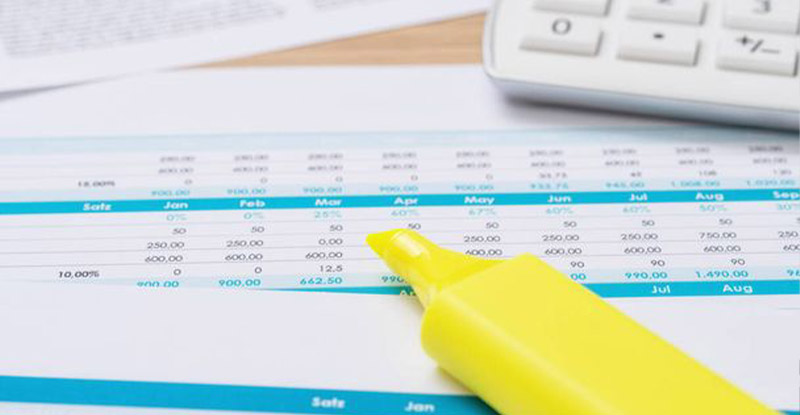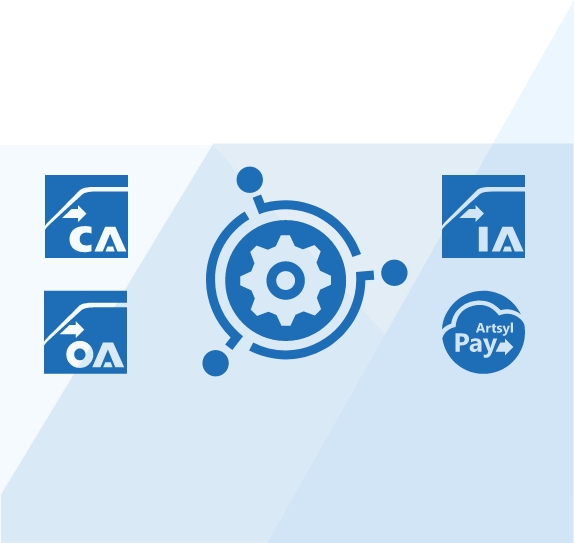Every business large or small has to account for its expenses. As part of the financial operations, the accounts payable department plays a crucial role in the management of expenses.
In simple terms, accounts payable (AP) refers to the money a business owes to other entities for goods and services received. The payment of bills on time is important for maintaining the financial health of a business.
Key Takeaways
Managing accounts payable can be a daunting task, but doing it right can save a company money, maximize cash flow, and keep vendors happy. In this article, we explain what accounts payable are and provide tips on effective accounts payable management.
Transform your accounts payable processes with Artsyl docAlpha’s intelligent document capture and AI-powered OCR data extraction. Automate your AP operations and put an end to manual data entry. Get started today!
Book a demo now
Common Misconceptions About Accounts Payable
In the world of accounting, accounts payable (AP) plays a critical role in managing a company’s financial obligations. However, there are several common misconceptions about accounts payable. Let’s explore these misconceptions
Accounts Payable is the Same as Accounts Receivable
Misconception: Accounts payable and accounts receivable are often confused or used interchangeably.
Clarification: Accounts payable (AP) represents the money a company owes to its suppliers and creditors. Accounts receivable (AR), on the other hand, is the money owed to the company by its customers.
Intelligent Process Automation Solution
Related Videos
Accounts Payable is Only About Bills
Misconception: Some believe that accounts payable only involves managing and paying bills.
Clarification: While paying bills is a significant part of AP, it also includes managing vendor relationships, resolving discrepancies, and optimizing cash flow.
Late Payments are Always Bad
Misconception: Many assume that late payments to vendors are always detrimental.
Clarification: While timely payments are essential, there are situations where strategically delaying payments can benefit a company’s cash flow or result in negotiated discounts.
Accounts Payable is Solely a Back-Office Function
Misconception: Accounts payable is often viewed as a back-office task with no strategic impact.
Clarification: Effective AP management can influence a company’s financial health, supplier relationships, and cash management, making it a strategic function.
RELATED: Machine Learning AP Solutions
All Invoices are Accurate
Misconception: Some assume that all invoices from vendors are error-free.
Clarification: Invoices can contain errors, discrepancies, or incorrect charges. It’s crucial to verify and reconcile invoices to ensure accuracy.
Accounts Payable is Only About Cutting Costs
Misconception: Accounts payable is primarily focused on cost reduction.
Clarification: While cost control is a goal, accounts payable also aims to ensure compliance with payment terms, build vendor relationships, and maintain a smooth procurement process.
Automation Eliminates the Need for AP Staff
Misconception: Automating AP processes means there’s no need for human involvement.
Clarification: Automation streamlines routine tasks but doesn’t replace the need for AP professionals who handle exceptions, vendor communication, and strategic decision-making.
AP is Immune to Fraud
Misconception: Accounts payable are considered non-vulnerable to fraud.
Clarification: AP departments are susceptible to various types of fraud, such as invoice fraud or payment diversion schemes. Implementing strong internal controls is essential.
AP is Static and Unchanging
Misconception: Accounts payable processes remain the same over time.
Clarification: Accounts payable practices evolve with technology, regulatory changes, and business needs. Staying updated is vital for efficiency and compliance.
Accounts Payable is a One-Person Job
Misconception: A single person can handle all AP responsibilities.
Clarification: AP often involves a team of professionals, especially in larger organizations, to handle the volume and complexity of financial transactions.
Understanding these misconceptions can help businesses better manage their accounts payable processes, make informed decisions, and optimize their financial operations.
Witness the future of document processing. Artsyl docAlpha revolutionizes AP management with AI-driven automation. Discover how it can boost accuracy and efficiency in your AP workflow.
Book a demo now
Calculating Accounts Payable
Calculating accounts payable (AP) is relatively straightforward. Accounts payable represents the amount a business owes to its suppliers or creditors for goods and services received but not yet paid for. To calculate it, follow these steps:
Step 1: Gather Information
Collect all the relevant invoices and bills from your suppliers. These should detail the amount you owe to each supplier and the terms of payment.
Step 2: Sum Up the Invoices
Add up the total amount due on all the invoices. This total represents your accounts payable at a specific point in time.
Step 3: Account for Any Additional Liabilities
Consider any additional amounts you owe that may not be on invoices, such as:
- Accrued expenses: Expenses that have been incurred but not yet invoiced, like utilities or rent.
- Purchase orders: Goods or services ordered but not yet invoiced.
- Unrecorded bills: Bills that you may not have received yet, but you know are coming. Include these amounts in your total accounts payable.
Step 4: Subtract Any Prepayments
If you’ve made advance payments to suppliers or received credits for future purchases, subtract these amounts from your total accounts payable. These represent prepayments and should not be included in your current liabilities.
Step 5: Calculate the Total Accounts Payable
The total accounts payable is the sum of all the amounts owed to suppliers and creditors minus any prepayments. This figure reflects your current outstanding liabilities.
Here’s the formula in a simplified way:
Total Accounts Payable = Sum of Invoices + Additional Liabilities — Prepayments
It’s essential to keep your accounts payable accurate and up-to-date to ensure you meet your payment obligations promptly and maintain healthy supplier relationships.
Tip: Regularly reconcile your AP records with your financial statements to spot discrepancies and resolve any outstanding issues.
Tired of drowning in invoices? InvoiceAction is your lifeline. Automate invoice processing, reduce errors, and supercharge your accounts payable team’s productivity. Don’t wait—take action now!
Book a demo now
How to Manage the Accounts Payable Process
Establish procedures and controls
Setting up a consistent accounts payable process and a set of guidelines to ensure accountability, accuracy, and the prevention of error is a good starting point. Ensure that security protocols are in place to avoid fraud, and that only authorized individuals have access to vendor records and payment information. Having a checklist for the accounts payable process can help avoid oversights and allow for better oversight of payments.
Track and Plan your Cash Flow
The payment of creditors should always comply with agreed-upon terms. Tracking payments and taking advantage of early payment discounts can save a company money and improve customer relationships. It’s important to maintain an accurate and up-to-date accounts payable ledger to help keep track of payments and plan for future payments more effectively.
Embrace Accounts Payable Technology
Technology allows for a more efficient and streamlined management of accounts payable. From automating payment processing to the use of electronic invoices, technology can reduce manual processing errors and improve accuracy. By using technologies to track invoices and payments, it is possible to maintain better financial reporting.
RELATED: AP Automation Solutions that Leverage Artificial Intelligence
Establish Positive Vendor Relationships
Establishing good vendor relationships is important. When suppliers receive payment on time, they are more inclined to extend favorable terms and continue providing goods or services. Open communication with vendors is essential in maintaining good relationships with them. When processes are clear and communication channels are open, both parties are likely to have greater confidence in the business.
Ensure Payments Compliance with Regulations
Noncompliance to internal and external regulatory requirements can lead to fines and tarnish the business’s reputation. Understanding and adhering to legal and financial regulations can help mitigate the risk of such consequences.
Therefore, it is imperative that the accounts payable department stays updated on the latest financial regulations and strategies.
Managing accounts payable has never been this easy. Artsyl’s innovative intelligent document automation with docAlpha makes complex AP tasks a breeze. Start your journey to a smoother, error-free AP today!
Book a demo now
Examples of Accounts Payable in Different Industries
Accounts payable (AP) is a fundamental aspect of financial management across various industries. Here are examples of accounts payable in different sectors:
Retail and Accounts Payable
Retailers receive invoices from suppliers for merchandise, which they must pay within agreed terms. In case of returns or damaged goods, retailers may receive credits from vendors, reducing the accounts payable balance.
Manufacturing and Accounts Payable
Manufacturers purchase raw materials and components from suppliers, with invoices specifying payment terms. Manufacturing plants have ongoing utility expenses, and utility providers send monthly invoices for electricity, water, and gas.
Accounts Payable in Healthcare
Hospitals and healthcare facilities procure medical supplies and equipment, which generate accounts payable when invoices arrive. Pharmaceutical companies have accounts payable for raw materials and supplies used in drug production.
Technology and Accounts Payable
Technology companies pay software licensing fees, often on a regular basis, to use software in their operations. The acquisition of computer hardware and components generates accounts payable.
Construction and Accounts Payable
Construction companies purchase materials, machinery, and equipment, with invoices from suppliers creating accounts payable. Payments to subcontractors for their services also form a significant part of accounts payable.
Accounts Payable in Hospitality
Restaurants and hotels have accounts payable for food and beverage suppliers, with invoices for deliveries. Monthly utility bills and rent payments contribute to accounts payable in the hospitality industry.
Automotive and Accounts Payable
Auto manufacturers and repair shops buy parts and components from suppliers, creating accounts payable. Dealerships and rental car companies have accounts payable for leased vehicles.
RELATED: Accounts Payable Workflow
Accounts Payable in Education
Schools and universities purchase textbooks, teaching materials, and equipment, with associated accounts payable. Employee payroll, including faculty salaries, forms part of accounts payable.
Agriculture and Accounts Payable
Farms acquire seeds and fertilizers from suppliers, which generate accounts payable.
Maintenance services for agricultural equipment also create accounts payable.
Accounts Payable in Financial Services
Financial institutions have accounts payable related to borrowed funds.
Payment processing and technology services generate accounts payable in the financial sector.
Energy and Accounts Payable
Energy companies acquire fuel for power generation or transportation, leading to accounts payable. Energy facilities enter into maintenance contracts with third-party providers, resulting in payable invoices.
As you can see, accounts payable is a universal financial concept, applicable in diverse industries. It reflects a company’s financial obligations to its suppliers and is integral to maintaining healthy vendor relationships and managing cash flow effectively.

Your invoices deserve the best treatment.
Let InvoiceAction automate your AP processes, so your team can focus on what matters—growing your business. Accounts payable excellency is only a click away. Explore the possibilities now!
Key Terms Explained
What is accounts payable?
Accounts payable (AP) refers to the outstanding balances that a business owes to its suppliers or creditors for goods or services that have been received but not yet paid for. It represents a company’s short-term liabilities and is a crucial component of its overall financial health and liquidity.
Is accounts payable a liability?
Yes, accounts payable is indeed a liability. It falls under the category of current liabilities on a company’s balance sheet. This is because it represents obligations to pay off debts or amounts owed within a relatively short period, usually within a year.
Accounts payable turnover
Accounts payable turnover is a financial ratio that measures how efficiently a company manages its accounts payable. It’s calculated by dividing the net credit purchases by the average accounts payable during a specific period. A higher turnover ratio indicates more efficient management of supplier payments.
Accounts payable vs accounts receivable
Accounts payable and accounts receivable are both critical components of a company’s financial operations, but they are opposite in nature. Accounts payable represents money owed to suppliers, while accounts receivable represents money owed to the company by its customers.
Is accounts payable an asset?
No, accounts payable is not an asset; it is a liability. Assets are economic resources that a company owns, while accounts payable represents amounts the company owes to others.
Accounts receivable vs payable
Accounts receivable and accounts payable are often compared due to their opposing roles. Accounts receivable represents money to be received, typically from customers, while accounts payable represents money to be paid to suppliers or creditors.
Accounts payable turnover ratio
The accounts payable turnover ratio is a financial metric used to assess how efficiently a company manages its accounts payable. It is calculated by dividing the net credit purchases by the average accounts payable during a specific period, providing insights into payment efficiency.
Notes payable vs accounts payable
Notes payable and accounts payable both involve money owed by a company, but they differ in terms of the nature of the obligation. Notes payable involve formal written agreements, often with interest, while accounts payable are more informal and typically involve regular business transactions.
Accrued expenses vs accounts payable
Accrued expenses and accounts payable are similar in that they both represent liabilities. However, accrued expenses involve costs that have been incurred but not yet billed by the supplier, while accounts payable represent actual invoices from suppliers.
Is accounts payable a debit or credit?
In double-entry accounting, an increase in accounts payable is recorded as a credit because it represents an increase in liabilities. Conversely, a decrease in accounts payable is recorded as a debit.
Accounts payable turnover formula
The accounts payable turnover ratio is calculated by dividing the net credit purchases during a specific period by the average accounts payable for that period. The formula is: Accounts Payable Turnover Ratio = Net Credit Purchases / Average Accounts Payable.
Accounts payable ledger template
An accounts payable ledger template is a structured document used by businesses to record and track their accounts payable transactions. It typically includes columns for the date, supplier name, invoice details, amounts, and payment status.
Accounts payable journal entry
When recording accounts payable transactions in accounting journals, a typical journal entry involves crediting the accounts payable account to increase the liability and debiting another appropriate account (e.g., expenses, assets) to reflect the corresponding transaction, such as a purchase or expense.
Wrapping Things Up: Accounts Payable Excellency Is Possible
In conclusion, managing accounts payable effectively can have a positive impact on a company’s financial operations. Establishing processes, maintaining accurate records, and conducting yourself with positive communication and within compliance with regulations is key.
By taking careful steps and utilizing technology, companies can build a strong accounts payable department that ensures timely payments, maximizes cash flow, and strengthens relationships with vendors. Moving towards best practices can go a long way in smoothing out the process of effectively managing accounts payable.
Ready to join the ranks of top-performing AP teams? InvoiceAction as part of Artsyl docAlpha platform is your secret weapon for success. Stay ahead of the competition by embracing cutting-edge technology. Don’t fall behind—lead the way with us!
Book a demo now
FAQ
Why is accounts payable important for a business?
Accounts payable is crucial for a business as it represents the company's short-term financial obligations to suppliers and vendors. This liability, recorded on the balance sheet, provides a comprehensive view of the firm's financial health and current financial position. Effective management of accounts payable ensures transparent and accurate financial reporting, influencing key financial ratios and the cash flow statement. It also plays a pivotal role in maintaining positive relationships with suppliers by facilitating timely payments. Additionally, accounts payable aids in the accrual basis of accounting, enabling businesses to recognize expenses when incurred rather than when cash is paid, contributing to a more accurate portrayal of the company's financial performance and obligations.
How do I record accounts payable transactions?
Recording accounts payable transactions involves following accounting principles to accurately reflect the financial obligations of a business to its suppliers. Here’s a general guide on how to record accounts payable transactions:
- Document the Purchase:
- When goods or services are received from a supplier, document the transaction. This could be through a purchase order, invoice, or receipt.
- Create a Purchase Order (Optional):
- If applicable, create a purchase order before receiving the goods or services. This serves as a preliminary record of the transaction.
- Receive Goods or Services:
- When goods or services are received, acknowledge the receipt. This may involve physically receiving goods or confirming the completion of services.
- Match Invoice to Purchase Order (If Applicable):
- If a purchase order was issued, match the supplier’s invoice to the details on the purchase order to ensure accuracy.
Related: Invoice Matching Process
- Record the Invoice:
- Create an entry in the accounts payable ledger to reflect the supplier’s invoice. Debit the corresponding expense account (e.g., «Inventory» or «Utilities») and credit the accounts payable account.
- Verify Payment Terms:
- Confirm the payment terms outlined in the invoice, such as the due date and any early payment discounts. This information is crucial for accurate financial planning.
- Periodic Review:
- Regularly review the accounts payable ledger to ensure all transactions are accurately recorded and up-to-date.
- Payment Processing:
- When it’s time to make a payment, create a journal entry to record the payment. Debit the accounts payable account and credit the cash or bank account.
- If using a check or electronic payment, record the transaction in the check register or online banking platform.
- Reconciliation:
- Periodically reconcile accounts payable balances with supplier statements to ensure consistency and accuracy.
- Close the Transaction:
- Once the payment is made, close the transaction by marking it as paid in the accounts payable ledger.
Always adhere to accounting principles, maintain proper documentation, and use accounting software to streamline the accounts payable process. It’s recommended to consult with an accountant or financial professional for specific guidance tailored to your business and accounting system.
How can I optimize accounts payable processes?
Optimizing accounts payable processes involves streamlining procedures to enhance efficiency, accuracy, and overall financial management. Here are several strategies to optimize your accounts payable processes:
- Automation: Implement accounts payable automation software to streamline invoice processing, reduce manual errors, and accelerate approvals.
- Electronic Invoicing: Encourage suppliers to send electronic invoices, simplifying the receipt and processing of invoices while reducing paper-based inefficiencies.
- Standardize Processes: Establish standardized procedures for invoice submission, approval workflows, and payment processing to ensure consistency and efficiency.
- Centralized Data: Consolidate accounts payable data in a centralized system to facilitate easier access, reporting, and analysis.
- Supplier Collaboration: Foster strong communication with suppliers to address issues promptly, negotiate favorable terms, and establish efficient payment processes.
- Early Payment Discounts: Take advantage of early payment discounts offered by suppliers to save costs and improve cash flow.
- Cloud-Based Solutions: Utilize cloud-based accounting systems to enable remote access, collaboration, and real-time visibility into accounts payable activities.
Related: Cloud-Based AP Software
- Implement Approval Workflows: Define clear approval hierarchies for invoices to expedite the approval process and avoid delays.
- Regular Audits: Conduct regular audits of accounts payable processes to identify areas for improvement, reduce errors, and enhance compliance.
- Employee Training: Ensure that staff involved in accounts payable processes receive adequate training on procedures, systems, and compliance to minimize errors and improve efficiency.
- Integration with ERP Systems: Integrate accounts payable processes with Enterprise Resource Planning (ERP) systems for seamless data flow between different business functions.
Related: 10 Best ERP Solutions for Your Business
- Monitor Key Performance Indicators (KPIs): Establish and monitor KPIs such as invoice processing time, error rates, and payment cycles to track performance and identify opportunities for improvement.
By adopting these strategies, businesses can significantly enhance their accounts payable processes, leading to improved accuracy, reduced processing times, and better overall financial management.
What is the accounts payable turnover ratio?
The accounts payable turnover ratio is a financial metric that assesses how efficiently a business manages its accounts payable by measuring the number of times the company pays off its average accounts payable during a specific period, typically a year. It is calculated by dividing the total purchases made on credit by the average accounts payable for the same period. A higher turnover ratio indicates that a company is paying its suppliers more frequently, while a lower ratio may suggest a slower payment cycle. This ratio is valuable for assessing a business’s liquidity, financial health, and efficiency in managing its trade credit obligations.
How do I ensure accurate and timely payments to suppliers?
Ensuring accurate and timely payments to suppliers involves implementing efficient accounts payable processes. Utilize automation tools for invoice processing to reduce manual errors and streamline approval workflows. Establish clear payment terms with suppliers and negotiate discounts for early payments, encouraging prompt transactions. Regularly review and reconcile accounts payable to identify discrepancies or outstanding invoices. Implement a reliable accounting system that provides real-time visibility into cash flow, allowing for better planning and management of payment schedules. Foster open communication with suppliers to address any issues promptly. Additionally, leverage technology solutions, such as electronic payment methods, to expedite the payment process and enhance overall accuracy and timeliness in settling financial obligations to suppliers.
What are common challenges in accounts payable management?
Common challenges include invoice discrepancies, late payments, manual data entry errors, and managing a high volume of invoices.
How can technology help in accounts payable management?
Technology, such as InvoiceAction accounts payable automation software, can streamline invoice processing, reduce errors, provide real-time insights, and improve overall efficiency.
What are the best practices for accounts payable reconciliation?
Accounts payable reconciliation is crucial for maintaining accurate financial records and ensuring transparency in a business’s financial transactions. Here are some best practices for effective accounts payable reconciliation:
- Regular Reconciliation:
- Perform regular and timely reconciliation of accounts payable to identify discrepancies promptly.
- Detailed Documentation:
- Maintain detailed documentation, including invoices, receipts, and purchase orders, to support reconciliation efforts.
- Segregation of Duties:
- Segregate duties among employees to ensure that the individual responsible for reconciliation is not the same person handling payments or approvals.
- Use Accounting Software:
- Utilize accounting software to automate reconciliation processes, improving accuracy and efficiency.
- Three-Way Match:
- Implement a three-way match system, comparing purchase orders, invoices, and receiving documentation to verify accuracy.
- Vendor Statement Reconciliation:
- Regularly reconcile vendor statements with internal records to identify any discrepancies and address them promptly.
- Accruals and Prepayments:
- Consider accruals and prepayments to ensure that all expenses are recognized in the correct accounting period.
- Consistent Processes:
- Establish and maintain consistent processes for reconciliation to ensure uniformity and accuracy.
- Review and Approval:
- Implement a review and approval process for reconciliation activities to add an extra layer of verification.
- Monitor Outstanding Items:
- Keep a close eye on outstanding items and follow up on unreconciled items promptly.
- Clear Communication:
- Foster clear communication between the accounts payable team and other relevant departments to address discrepancies collaboratively.
- Regular Training:
- Provide regular training to accounts payable staff to keep them informed about best practices and any changes in reconciliation processes.
- Exception Handling:
- Establish clear procedures for handling exceptions or discrepancies, ensuring they are investigated and resolved in a timely manner.
- Audit Trails:
- Maintain audit trails for reconciliation activities to provide a transparent record of changes and actions taken.
By incorporating these best practices into your accounts payable reconciliation processes, you can enhance accuracy, efficiency, and overall financial control within your organization.
What role does accounts payable play in financial reporting?
Accounts Payable (AP) plays a crucial role in financial reporting by representing the amounts a business owes to its suppliers or vendors. Here’s how AP contributes to financial reporting:
- Liability on the Balance Sheet: Accounts Payable is recorded as a liability on the balance sheet. This reflects the total amount the business owes to suppliers at a specific point in time.
- Accurate Financial Position: AP provides an accurate representation of a company’s financial obligations. It reflects the short-term debts that need to be settled, contributing to a comprehensive view of the company’s financial position.
- Cash Flow Statement: AP impacts the cash flow statement, specifically in the operating activities section. Payments made to settle accounts payable are recorded as cash outflows, affecting the company’s overall cash flow.
Related: Cash Flow Management Software
- Expense Recognition: AP is closely tied to expense recognition. When goods or services are received, but payment is yet to be made, it represents an accrued expense. AP helps in recognizing these expenses in the appropriate accounting period.
- Supplier Relationships: Maintaining timely and accurate AP records is essential for fostering positive relationships with suppliers. It ensures that payments are made promptly, which can influence credit terms and future transactions.
- Financial Ratios: AP influences financial ratios, such as the current ratio, which assesses a company’s ability to cover short-term liabilities. A higher accounts payable balance can impact this ratio.
- Audit Trail: AP records provide an audit trail for financial transactions, allowing for transparency and accountability in financial reporting.
- Accrual Basis Accounting: In accrual basis accounting, expenses are recognized when incurred, not necessarily when cash is paid. AP facilitates the proper recognition of expenses in the period they are incurred.
Effective management of accounts payable is vital for accurate financial reporting, reflecting the company’s financial obligations, cash flow, and liabilities.
How can I prevent accounts payable fraud?
Preventing accounts payable fraud requires a combination of robust internal controls, vigilant monitoring, and employee education. Here are key strategies to minimize the risk of accounts payable fraud:
- Segregation of Duties:
- Clearly define roles and responsibilities within the accounts payable process to prevent a single individual from having end-to-end control.
- Vendor Verification:
- Verify the legitimacy of new vendors through background checks and ensure accurate vendor information is maintained.
- Purchase Order Matching:
- Implement a three-way match system, comparing purchase orders, invoices, and receiving documentation to detect discrepancies.
- Regular Audits:
- Conduct regular internal and external audits to identify irregularities or suspicious activities within the accounts payable process.
- Employee Training:
- Train employees on recognizing potential fraud schemes, emphasizing the importance of ethical behavior, and fostering a culture of integrity.
- Dual Authorization:
- Require dual authorization for significant payments or changes to vendor information to add an extra layer of scrutiny.
- Use Technology:
- Implement fraud detection tools and utilize technology to monitor transactions for unusual patterns or anomalies.
- Secure Access Controls:
- Restrict access to accounts payable systems and information to authorized personnel only, using strong access controls and passwords.
- Regular Statement Reconciliation:
- Regularly reconcile vendor statements with internal records to identify any discrepancies or unauthorized transactions.
- Vendor Management:
- Regularly review and update the list of approved vendors, ensuring that only legitimate vendors are in the system.
- Encourage Whistleblowing:
- Establish a confidential reporting mechanism for employees to report any suspicious activities without fear of retaliation.
- Stay Informed:
- Stay informed about common accounts payable fraud schemes and update preventive measures accordingly.
By implementing a combination of these strategies, businesses can significantly reduce the risk of accounts payable fraud and create a more secure financial environment. Regular monitoring and proactive measures are essential to stay ahead of potential threats.
What should I consider when negotiating payment terms with suppliers?
When negotiating payment terms with suppliers, several factors should be carefully considered to establish mutually beneficial arrangements. First and foremost, assess your own cash flow and financial situation to determine a realistic and sustainable payment schedule. Understand the supplier’s financial needs and constraints to find a balance that supports both parties. Consider the nature of the goods or services provided and the industry standards for payment terms. Evaluate the supplier’s reliability and the impact of timely payments on the quality of the relationship. Explore potential discounts for early payments and negotiate favorable terms that align with your working capital requirements. Additionally, clearly define expectations and terms in a written agreement to avoid misunderstandings. Open communication and transparency are key to building strong, collaborative relationships with suppliers.
What are the consequences of mismanaging accounts payable?
Mismanagement can lead to late fees, damaged supplier relationships, financial strain, and even legal issues. Proper accounts payable management is essential for a company’s financial stability.





 Advanced AI for Accounts Payable: 7 Things You Need to Know
Advanced AI for Accounts Payable: 7 Things You Need to Know Accounts Payable Workflow
Accounts Payable Workflow Accounts Receivable Process Cycle
Accounts Receivable Process Cycle Accounts Payable vs Accounts Receivable: What is the Difference?
Accounts Payable vs Accounts Receivable: What is the Difference? Unravelling the Decision-Making Process in Accounts Payable Automation
Unravelling the Decision-Making Process in Accounts Payable Automation Accounts Payable Automation and Payment Optimization
Accounts Payable Automation and Payment Optimization




